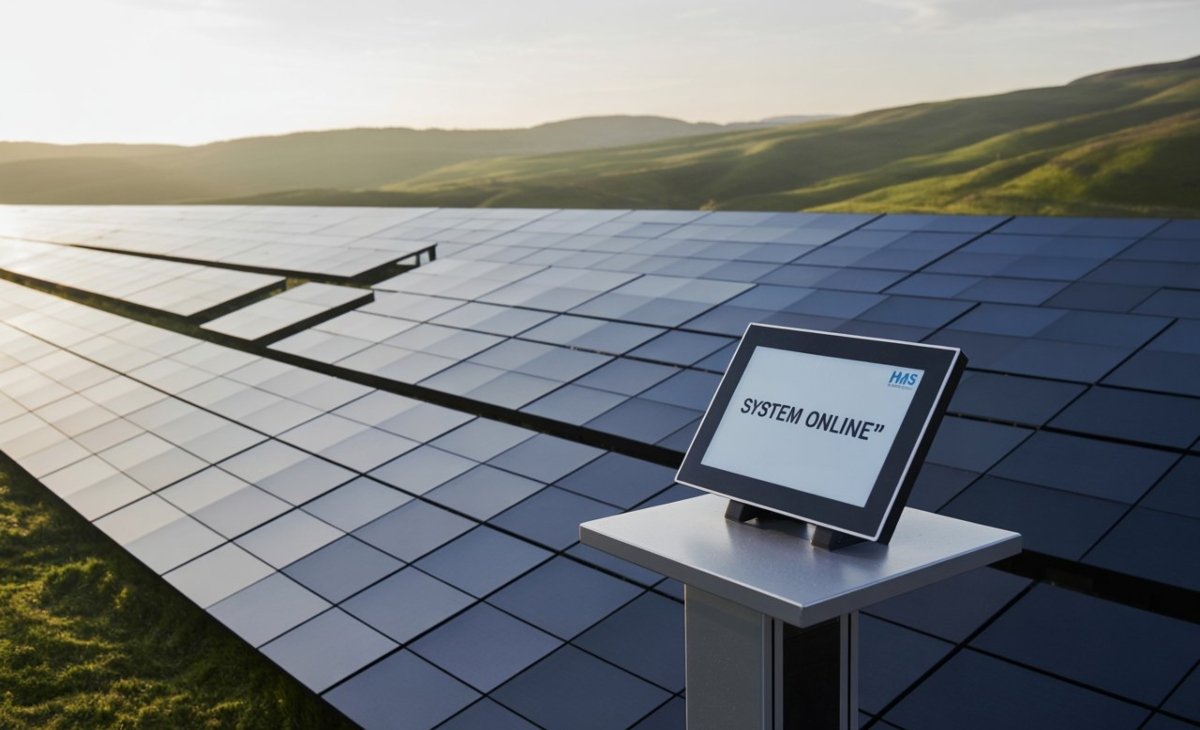The way we harness solar energy has evolved dramatically in recent years. What once relied solely on bulky panels and centralized systems has now given way to smarter, scalable, and far more adaptive technologies. At the forefront of this shift stands HMS Photovoltaik—a hybrid modular system that goes far beyond traditional photovoltaic setups.
But what exactly is HMS Photovoltaik? Imagine a solar setup where every panel functions as part of a coordinated, intelligent team—each one capable of independent optimization, real-time communication, and seamless expansion. Whether you’re managing power for a family home or a sprawling industrial complex, HMS Photovoltaik transforms your solar network from a passive energy collector into a dynamic, data-driven power ecosystem.
As climate goals accelerate and energy independence becomes more urgent, HMS Photovoltaik offers a sustainable, scalable, and future-proof solution for homes, businesses, and energy providers.
What Sets HMS Photovoltaik Apart
Conventional solar systems rely on a centralized inverter to process the energy generated by the entire array. While efficient in simple installations, this method exposes the system to several weaknesses—particularly when environmental conditions vary across the surface of the array. In contrast, HMS Photovoltaik decentralizes the brain of the operation.
By using modular microinverters, intelligent safety systems, and integrated monitoring platforms, HMS Photovoltaik ensures that each individual solar panel operates at its peak. If one panel underperforms due to shading, debris, or mechanical issues, the rest remain unaffected. This granular level of control allows for real-time responsiveness to external conditions—such as cloud movement, angle of sunlight, or temperature swings.
It’s not just about harvesting more energy. It’s about being able to see, understand, and fine-tune that process in real time. That’s the real innovation of HMS.
How HMS Photovoltaik Works
To understand how transformative HMS Photovoltaik really is, it’s worth looking at the system’s architecture. The core of HMS lies in its hybrid modular approach—where hardware and software operate in synergy.
Each panel typically connects to its own microinverter, which immediately converts DC electricity to usable AC at the source. These inverters are managed collectively by a centralized monitoring system, allowing users to track performance on a per-panel basis. The system often includes integrated safety mechanisms like rapid shutdown units, which comply with global fire and electrical codes, and battery-ready interfaces that support energy storage with minimal configuration.
More advanced setups also incorporate wireless communication modules, allowing the entire system to communicate with cloud-based platforms for remote control, diagnostics, and even firmware updates. This connectivity gives both users and technicians unprecedented access to their system’s performance—making energy truly visible, manageable, and actionable.
Why Modularity Matters More Than Ever
Flexibility isn’t a luxury—it’s a necessity in modern energy design. The modular nature of HMS Photovoltaik empowers users to expand their systems without the need to rewire or overhaul existing infrastructure. Start with a 4-panel system today. Add 10 more next year. The architecture supports both horizontal and vertical scaling.
This future-readiness also extends to storage and grid interaction. As more households invest in battery solutions or begin participating in local energy markets, HMS systems can evolve to meet those demands. That level of scalability gives HMS Photovoltaik a clear edge in a market increasingly defined by personalization and adaptability.
Performance Where It Counts
Of course, technology means little if it doesn’t deliver real-world results. HMS Photovoltaik isn’t just smarter—it’s also significantly more efficient. Systems using modular microinverters regularly outperform centralized setups by 8–15%, especially in environments with inconsistent sunlight or partial shading.
Why? Because each panel works independently, adjusting its output based on specific environmental data rather than compromising performance across the entire array. Combined with live diagnostics and fault isolation, this results in higher overall yield and faster ROI—particularly important for businesses and homeowners calculating payback periods.
HMS Photovoltaik in Action
Take the case of a residential installation in southern Germany. A homeowner installed a 6 kW HMS Photovoltaik system on a roof partially shaded by nearby trees. In a traditional setup, this shading would reduce the performance of the entire system. But with HMS, only the affected panels experienced lower output. The rest continued to generate at optimal capacity.
The results? A 12% increase in annual yield compared to a similarly sized centralized inverter system. More importantly, the owner gained complete visibility over each module’s performance via a user-friendly mobile dashboard—allowing for easy detection of dirt, wear, or malfunctioning components.
Smart Integration with the Grid
One of the key innovations of HMS Photovoltaik is its seamless compatibility with smart grid infrastructure. By using real-time communication protocols, HMS-enabled systems can work hand-in-hand with local grids to manage peak loads, contribute excess energy during high demand, and adjust output based on dynamic electricity pricing.
This interactivity turns passive solar panels into active grid participants, capable of supporting grid stability and helping utility companies balance their energy loads. In areas where power demand fluctuates or pricing is time-based, this can translate into significant savings—and even income generation—via net metering or peer-to-peer energy sharing platforms.
A Sustainability Catalyst for Homes and Industry
HMS Photovoltaik doesn’t just serve energy-conscious homeowners. It’s increasingly being adopted by industrial parks, agricultural sites, educational campuses, and government buildings seeking greater energy autonomy.
For commercial users, the ability to monitor and manage power generation on a granular level allows for better budgeting, smarter load distribution, and easier compliance with environmental regulations. In industrial zones, where operational loads are often unpredictable, modular systems offer a buffer against volatility—ensuring that energy flows remain consistent even under pressure.
Meanwhile, off-grid applications, especially in remote or underdeveloped regions, benefit from the low-maintenance and plug-and-play nature of HMS systems. With no need for extensive cabling or centralized components, deployments become faster and more cost-effective—accelerating access to clean energy in places where it’s needed most.
The Safety Factor
Modern solar systems must prioritize not just performance, but also safety. HMS Photovoltaik includes built-in protections such as automatic panel shutdown during faults, temperature-triggered disconnection, and surge protection modules.
These features are now required by law in many parts of the world—and HMS systems meet or exceed these standards by default. This not only simplifies the permitting and inspection process but also gives users peace of mind.
Looking Ahead: The Future of HMS Photovoltaik
As the solar industry enters a new phase marked by AI, storage, and smart automation, HMS Photovoltaik is poised to evolve even further. We’re already seeing integration with artificial intelligence, where systems can anticipate energy demand, adjust output before clouds roll in, and prioritize loads based on usage patterns.
Next-generation HMS modules may also feature bi-directional EV charging capabilities, blockchain verification for energy trading, and integration with home automation systems for seamless energy orchestration.
From a regulatory perspective, global standards are aligning rapidly, ensuring HMS systems are both future-compliant and globally interoperable. This is great news for installers and end users alike—ensuring long-term viability and widespread compatibility.
Conclusion: The Rise of Intelligent Solar with HMS Photovoltaik
The world isn’t just going solar—it’s going smart. And HMS Photovoltaik is leading that transformation. By merging modularity, intelligence, and scalability, these systems offer a blueprint for what solar energy should look like in 2025 and beyond.
Whether you’re trying to reduce your carbon footprint, cut electricity bills, or build energy independence, HMS Photovoltaik delivers on all fronts. It’s not only more efficient—it’s more adaptable, more reliable, and more aligned with the energy systems of the future.
If you’re ready to stop thinking about solar as static infrastructure and start seeing it as a living, evolving energy solution—then HMS Photovoltaik is the answer you’ve been waiting for.
FAQs About HMS Photovoltaik
What exactly does HMS mean in HMS Photovoltaik?
HMS stands for Hybrid Modular System—a solar system design where microinverters and monitoring tools are used to manage each panel individually.
Is HMS Photovoltaik suitable for residential use?
Absolutely. HMS systems are ideal for homes, especially those with variable sunlight exposure or plans for future expansion.
Can I add battery storage to an HMS Photovoltaik system later?
Yes. Most HMS systems are storage-ready, supporting both AC and DC-coupled battery integration.
How does HMS improve safety?
With features like rapid shutdown and fault isolation, HMS ensures compliance with fire and electrical codes while enhancing user safety.
Does HMS Photovoltaik cost more than traditional systems?
Initial costs can be slightly higher, but improved efficiency and faster ROI typically offset the difference within a few years.


